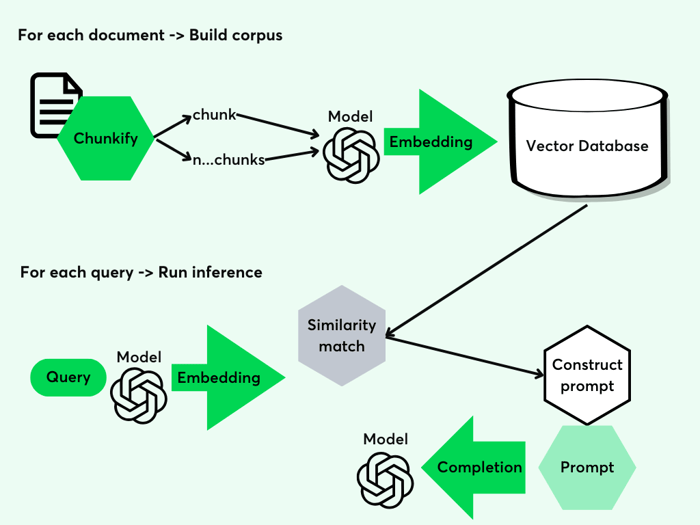Simplify IoT Smart Home Installations with a Generative AI Technical Co-Pilot

The landscape of IoT smart home technology keeps evolving. Some individual devices are basically plug & play, but a larger system with complex features is still a challenge when it comes to ensuring effective and efficient installations.
Each installation is unique, so this situation calls for a robust tech support system that can guide and troubleshoot the process of setting devices up and connecting them together into a comprehensive smart home system.
The challenges of IoT smart home system installation
There’s plenty to think about, and a lot that can go wrong when setting up a system like this:
- Security and privacy: IoT devices without proper security can be hacked, letting bad guys control your devices, steal your data, or peek into your private life.
- Compatibility: like trying to get people who speak different languages to work together, different brands and models of smart home gadgets often don't communicate well because there's no universal language they all understand.
- Network needs: these devices need a strong and steady Wi-Fi connection, it can be a hassle to make that work, especially in bigger homes.
- Costs: setting up a smart home can be pricey, so it’s important to know how to optimize those costs while preserving the features you want.
- Fixing bugs: when something goes wrong at any stage of the installation or during daily use, figuring out what and where the problem is can be a real headache.
- More devices, more problems: as you add more gadgets, managing them all gets tougher.
- Data overload: these devices collect tons of data. Handling all this information securely and efficiently, without compromising your privacy, is a big challenge.
- Installation complexity: Setting up a smart home isn't just plug-and-play. It's a complex mix of electrical, mechanical, and computer skills. Get it wrong, and it can really mess up how well your smart home works.
Finding answers to these challenges requires technical support from human assistants, or crawling through documentation and figuring out the right solution. Generative AI could offer a more swift solution.
Generative AI chatbot as IoT tech support
GenAI can be used to create a co-pilot for IoT installations. Trained on technical manuals and knowledge of electrical systems, it could offer real-time, accurate guidance for installers, even those that aren’t IoT experts.
One example of a similar feature is Google's 'help me script', which uses generative AI to help users create personalized automations without having to code.
It’s easy to imagine a feature that could guide you through the whole installation process, enabling anyone with even a minimal coding or technical background to do complex IoT installations with confidence:
- Generative AI systems are always learning and getting better. They can keep up with the latest tech and installation tricks, and help you avoid common mistakes.
- They understand context. When you ask something, they don't just spit out textbook answers. They ‘understand’ where you are, what you’re trying to do, and tailor their advice to fit those specific needs.
- You can use them anywhere, anytime, like having an expert in your pocket 24/7. This means you can get help whenever you need it, making the whole installation process smoother and faster.
In fact, you might find that ChatGPT Plus, and the GPT-4 model with vision can already be a good helper for home installations. But a better solution would be a system built specifically for this purpose.
What happens in the background
To build a smart home installation co-pilot, we would leverage a Large Language Model (LLM), like OpenAI’s GPT-3.5 or Meta’s Llama 2, as the engine of the system. Since LLMs can be fine-tuned for a specific use case, we could essentially teach them what they need to know about IoT home installations.
Here’s what happens in the background when you use an LLM as a co-pilot:

Part 1: Creating the database
- Building the corpus: the process starts by creating a corpus from individual text documents.
- Chunkify: each document is split into smaller parts, called "chunks."
- Processing chunks: a neural network processes each chunk to create an "embedding," a kind of digital fingerprint that captures its meaning.
- Storing embeddings: these embeddings are saved in a vector database, with details about each chunk’s origin and content for easy tracking.
Part 2: Answering queries
- Handling Queries: the system now works on addressing user queries.
- Query: this is what the user asks or inputs.
- Query embedding: just like chunks, the query is also turned into an embedding.
- Finding matches: this new embedding is compared with those in the database to find the most similar chunk.
- Creating a prompt: based on the best match, a specific prompt is formed, refining the user’s original question.
- Generating a response: the model takes this prompt and produces a detailed, relevant answer.
Conclusion
The concept of using genAI as a co-pilot for IoT home system installations is not yet a reality, and the potential to transform the smart home installation process is there. Imagine a scenario where GenAI not only streamlines installations but also makes them more efficient and responsive. This digital assistant could significantly ease the workload on human technicians, offering instant, intelligent support – a good example of the transformative power of generative AI.
PS. This particular challenge with IoT home installations came up during one of our AI Primer workshops. We facilitate them with companies to:
- Guide beginners through AI & GenAI use cases and help them with a strategy and best-in-class solutions
- Inspire GenAI-advanced teams with our helicopter view on challenges in their industries, and support them in prioritization
Happy to connect on LinkedIn or discuss on a call if there’s anything we can help you with.






